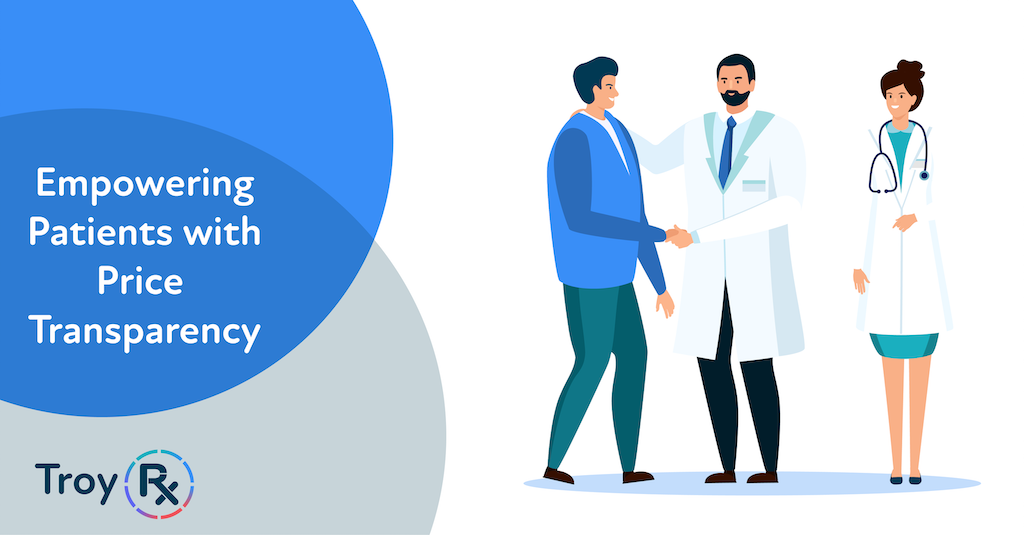Hospital Price Transparency for All

75-year-old Walter Spolum’s knee surgery in 2016 looked drastically different in June 2018 for his second knee surgery.
The retired railroad blacksmith experienced a reduced hospital stay at Gundersen Health System’s hospital in La Crosse, Wisconsin the second time around.
Doctors credit his quick healing to Spolum taking his first post-surgery walk on the same day of the surgery.

Even the cement used for both surgeries was different.
Doctors swapped the branded bone cement with antibiotics premixed in the bonding agent used in 2016 for a generic in 2018.
Although the surgery technicians now needed to mix antibiotics into the generic choice, the cement used in 2018 worked well for Spolum.
Surprise medical bills for Spolum’s two knee surgeries highlighted the “out-of-whack" state of healthcare costs described by the Wall Street Journal’s July report in 2018.
A basic knee surgery hit a list price of $50,000 in 2016 at Gundersen.
An internal investigation uncovered the actual cost at only $10,550.
By 2018, hospital executives cut waste, changed processes, and brought the actual cost for a knee surgery down to $8,700 with subtle changes like the one's listed above for Spolum.
THE LAW
A desire to cut healthcare costs and rising patient consumerism drives a change in basic assumptions in healthcare about price transparency.
Patients want to better understand the cost of their healthcare, so they are demanding control.
Healthcare networks can empower patients to choose the best care, rather than rationing the types or locations of treatment they receive due to the cost.
Changing laws show a trend to meet the growing expectations of patients and foster a new price transparency world for healthcare.
For example, the U.S Department of Health and Human Services (HHS) passed the Hospital Price Transparency law on November 15, 2019, putting the regulations in effect on January 1, 2021.
This emerging environment gives access to comprehensive pricing information about hospital services at every hospital operating in the U.S.
The details must be clear, accessible and include three hundred items and services provided at each facility.
A list of the seventy most common services provided by Centers for Medicare and Medicaid Services (CMS), leaving each hospital to choose the other 230 items and services they each list.
All must be listed online and include the gross cost, discounted cash price, payer-specific negotiated charge (per plan), de-identified minimum negotiated charge, and de-identified maximum negotiated charge.
The information must be available for free and easily accessible with no required PHI (Protected Health Information) to enter.
WHAT IT MEANS
As of July 2021, the impact of this law is still under evaluation, and it is unclear if the changes are fostering a more competitive healthcare marketplace.
It is important to not that patients who have access to increased information about the pricing of services in a hospital are not required to evaluate those details before their treatment.
CMS has started to audit the compliance of this policy on a select sample of hospitals, based on multiple complaints of noncompliance.
To field the complaints, CMS has made an online form available to the public and has encouraged patients to submit complaints if they cannot find a hospital’s standard charges online.
If after an investigation, CMS finds that a hospital is noncompliant with the rule, they may either request a corrective action plan, assess a penalty of up to $300/day, or publicize the penalty on the CMS website.
ARE MEDICATIONS NEXT?
Although medications do not fall under the Hospital Price Transparency law passed in 2019, healthcare leaders believe this trend of rising consumerism will continue to stretch across the industry.
Similar concepts of price transparency could take hold and drive patients to better understand the cost of their medications.
From a consumer standpoint, the patient might be able to access the gross cost, discounted price, and the Pharmacy Benefit Manager (PBM) negotiated charge of their medication.
Instead of obtaining these details on a hospital website, a patient may be able to look up this outpatient medication information on a pharmacy’s website.
As patients work to take more control of their health, they will look for ways to make medication more affordable.
Looking to a solution like the OptionRx platform, patients can easily put their price shopping skills to the test.
With a quick search, they can compare the price of their medications at pharmacies nearest to their location.
The details allow them to obtain and then more importantly stay on their medications.
This type of patient-centric mindset could dominate the healthcare scene creating positive results as seen with Spolum’s second knee surgery mentioned above.
Our in-house experts will continue to watch how the Hospital Price Transparency law affects healthcare.
More importantly, we will look for ripple effects that could happen across the healthcare industry.
Check back here for updates on if those laws are meeting their intended purpose and shifting to put patients first.